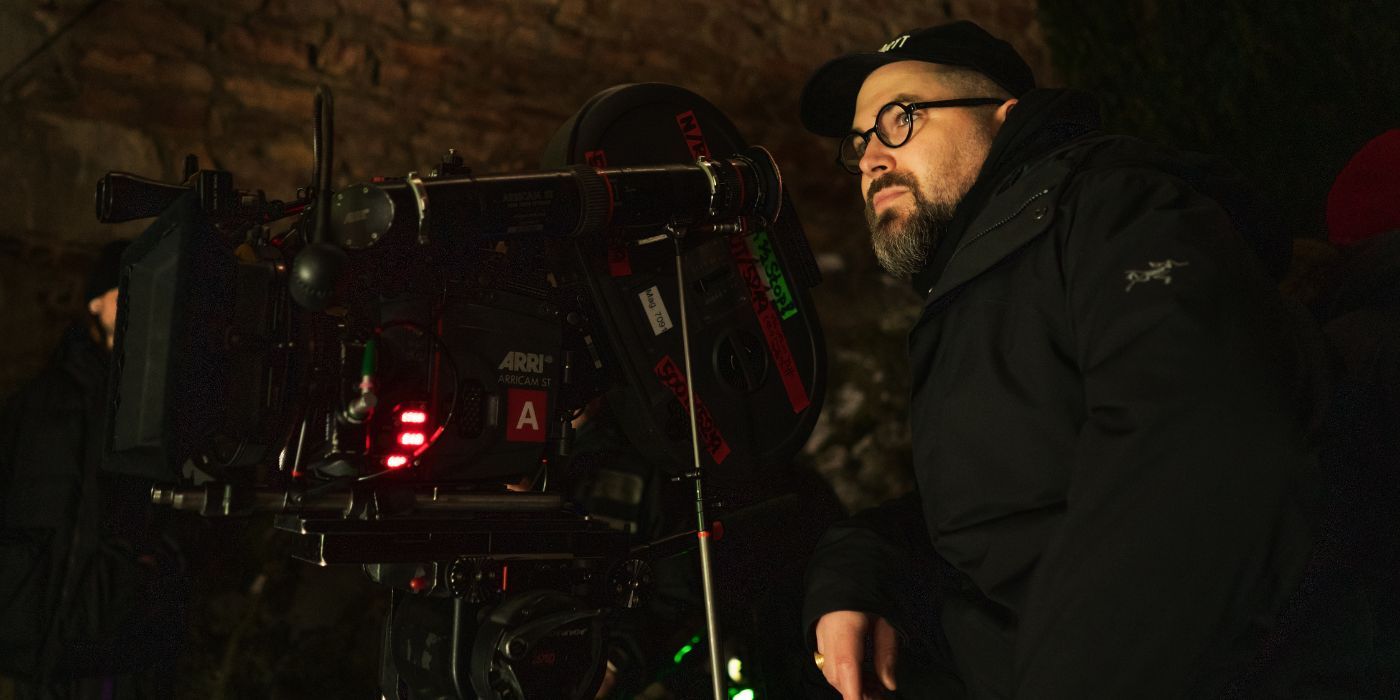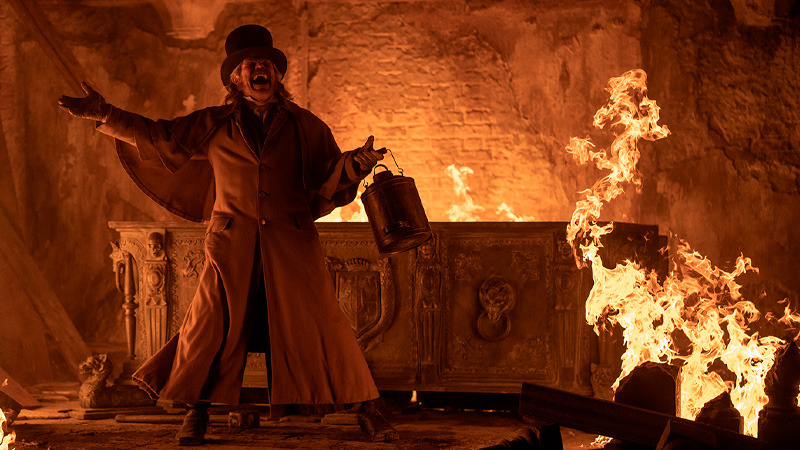Historical Significance of F.W. Murnau’s Nosferatu

Robert eggers nosferatu – F.W. Murnau’s 1922 silent horror film Nosferatu, eine Symphonie des Grauens (Nosferatu: A Symphony of Horror) is a landmark in cinematic history. Its enduring influence on the horror genre and its cultural impact cannot be overstated.
Robert Eggers’ “Nosferatu” is a haunting and atmospheric remake of the classic horror film. The film stars Anya Taylor-Joy as a young woman who is pursued by a vampire (played by Bill Skarsgård). Eggers’ film is a faithful adaptation of the original, but it also brings a fresh perspective to the story.
The film’s cinematography is stunning, and the performances are all excellent. Princess Anne , in particular, gives a standout performance as the vampire’s victim. Eggers’ “Nosferatu” is a must-see for fans of horror films and classic cinema.
Nosferatu in its Time
Released during the Weimar Republic in Germany, Nosferatu reflected the post-World War I anxieties and social unrest. Its depiction of a plague-ridden town and a mysterious vampire preying on its inhabitants resonated with audiences grappling with the trauma of war and the fear of the unknown.
Robert Eggers’ “Nosferatu” remake is a visually stunning and atmospheric horror film that captures the essence of the original classic. However, if you’re looking for something a little more lighthearted, I highly recommend checking out the long legs movie.
This charming and quirky film follows the misadventures of a young woman with unusually long legs. While it may not be as terrifying as “Nosferatu,” it’s sure to leave you with a smile on your face. And who knows, you might even learn a thing or two about accepting yourself for who you are.
Influence on the Horror Genre
Nosferatu introduced several enduring elements to the horror genre, including the iconic image of Count Orlok as a vampire with pointed ears, sharp teeth, and a long, flowing cloak. The film’s use of shadows, eerie sound effects, and unsettling camera angles set a new standard for horror filmmaking.
Cultural Legacy
Nosferatu has had a profound impact on popular culture. Its imagery and themes have been referenced in countless films, television shows, and works of literature. The film’s status as an unofficial adaptation of Bram Stoker’s Dracula has further cemented its place in the horror canon.
Robert Eggers’ Vision for a Modern Adaptation: Robert Eggers Nosferatu

Robert Eggers’ cinematic style is characterized by its meticulous attention to detail, atmospheric dread, and a profound understanding of folklore and mythology. In his adaptation of Nosferatu, Eggers brings these elements to bear, reimagining the classic tale while remaining faithful to its roots.
Eggers’ adaptation is a visually stunning and immersive experience that transports viewers to a world of shadows and superstition. The film’s cinematography, sound design, and production design are all meticulously crafted to create a sense of unease and foreboding. Eggers also makes use of symbolism and allegory to explore the themes of isolation, alienation, and the fear of the unknown.
Reimagining the Classic Tale
While Eggers’ adaptation is a faithful retelling of Murnau’s classic film, it also makes several significant changes. One of the most notable changes is the character of Count Orlok. In Eggers’ version, Orlok is a more sympathetic and complex figure. He is not simply a monster but a tragic figure who is cursed to live in eternal darkness.
Another significant change is the setting of the film. Eggers’ adaptation is set in the 19th century, which gives the film a more historical and realistic feel. This setting also allows Eggers to explore the social and political issues of the time, such as the rise of industrialization and the decline of traditional values.
Examples of Eggers’ Directorial Vision
- The film’s opening scene, which shows Orlok’s castle perched on a desolate mountaintop, is a powerful visual metaphor for the Count’s isolation and alienation.
- The use of sound design to create a sense of unease and foreboding. For example, the sound of Orlok’s carriage wheels creaking as he approaches Hutter’s house is a chilling reminder of the Count’s impending doom.
- The use of symbolism to explore the themes of the film. For example, the rats that infest Orlok’s castle are a symbol of the plague that is spreading throughout the town.
Eggers’ adaptation of Nosferatu is a masterful work of filmmaking that reimagines the classic tale while remaining faithful to its roots. The film is a visually stunning and immersive experience that explores the themes of isolation, alienation, and the fear of the unknown.
Exploring Themes and Symbolism

Robert Eggers’ Nosferatu delves into profound themes and employs potent symbolism to convey its message. The film explores the duality of good and evil, the fragility of life, and the consequences of unchecked desire.
Duality of Good and Evil, Robert eggers nosferatu
Eggers’ Nosferatu presents a nuanced portrayal of good and evil. Count Orlok, the vampire, embodies the destructive forces of nature, while Hutter and Nina represent the resilience of human spirit. The film’s exploration of this duality challenges traditional notions of morality and suggests that even within darkness, there is potential for redemption.
Fragility of Life
The film’s pervasive atmosphere of dread and decay underscores the fragility of human life. The plague-stricken town of Wismar serves as a constant reminder of the precariousness of existence. Through its depiction of death and suffering, Nosferatu forces us to confront our own mortality.
Consequences of Unchecked Desire
Eggers’ adaptation also explores the destructive consequences of unchecked desire. Hutter’s obsession with wealth and status leads him to make a pact with the devil, ultimately resulting in tragedy. The film serves as a cautionary tale about the dangers of letting our desires consume us.
Symbolism, Allegory, and Imagery
Eggers employs a rich tapestry of symbolism, allegory, and imagery to convey his themes. The vampire’s fangs symbolize the destructive power of unchecked desire, while the blood he consumes represents the life force he drains from his victims. The use of rats and insects throughout the film evokes a sense of decay and corruption.
Comparison to Original Film
While sharing many of the same themes as F.W. Murnau’s original Nosferatu, Eggers’ adaptation offers a more nuanced and contemporary interpretation. Eggers’ film delves deeper into the psychological motivations of its characters and explores the themes of isolation and alienation in a more explicit way.
Robert Eggers’ Nosferatu is a haunting and atmospheric reimagining of the classic horror film. The film’s titular vampire, Count Orlok , is a truly terrifying figure, with his long, sharp claws, pointed ears, and piercing eyes. Eggers’ Nosferatu is a must-see for fans of horror cinema.
Robert Eggers’ Nosferatu is a haunting and atmospheric retelling of the classic vampire tale. Its gothic visuals and eerie score create a sense of dread that lingers long after the credits roll. For those looking for a more in-depth exploration of the film’s themes and symbolism, I highly recommend reading solicitado peso pluma , which provides a comprehensive analysis of the film’s many layers.
Returning to Eggers’ Nosferatu, the film’s exploration of isolation and the fear of the unknown is particularly relevant in today’s world.
Robert Eggers’ upcoming remake of Nosferatu promises to be a haunting and atmospheric cinematic experience. While the original film was a silent masterpiece, Eggers’ version will bring a fresh perspective to the classic tale. One notable aspect of the film is its political subtext, which has been compared to the presidency of Jimmy Carter.
Carter’s presidency was marked by economic struggles and a crisis of confidence, much like the themes explored in Nosferatu. By connecting these two seemingly disparate works, Eggers invites us to reflect on the parallels between historical and contemporary political landscapes.